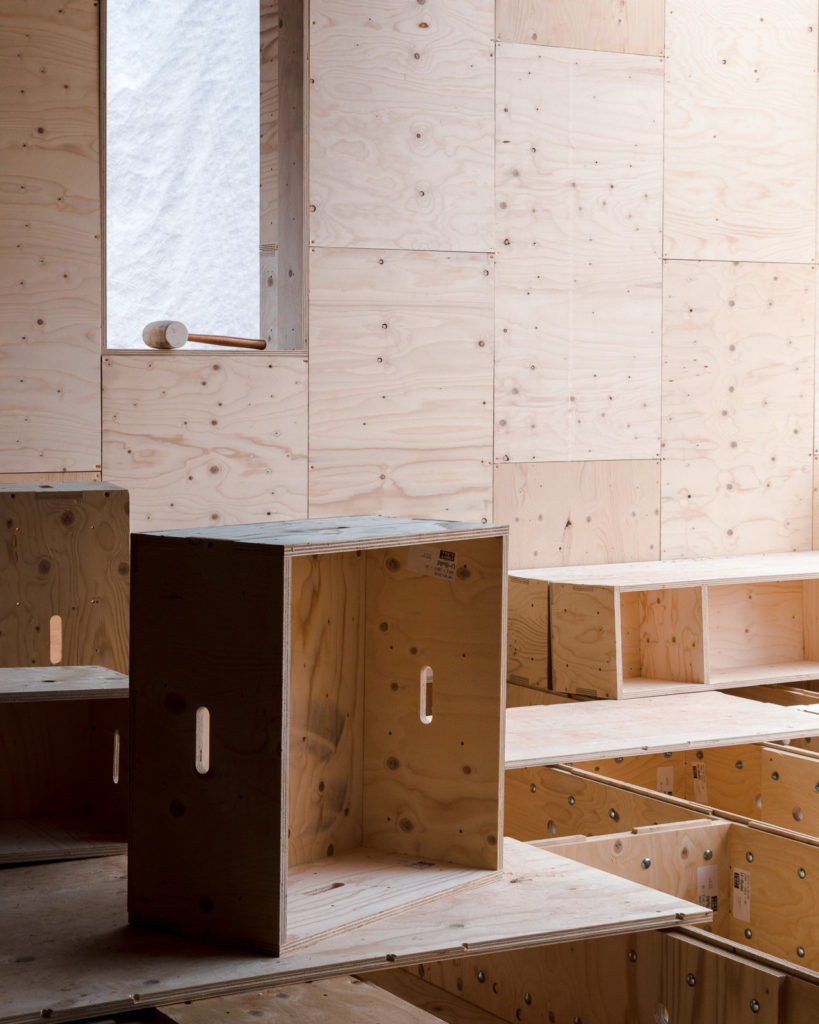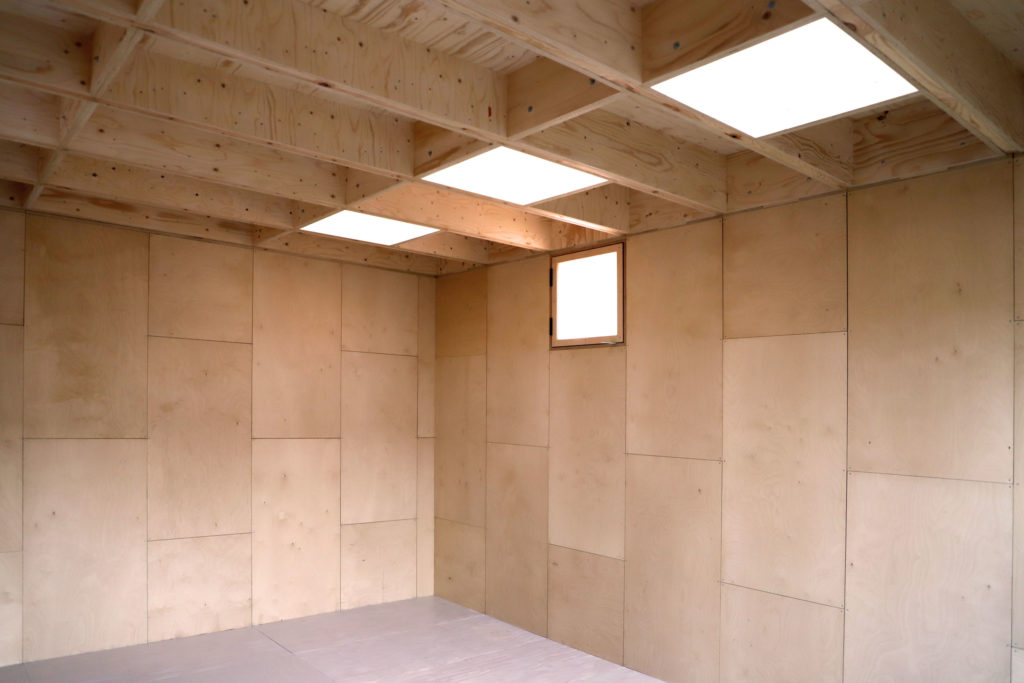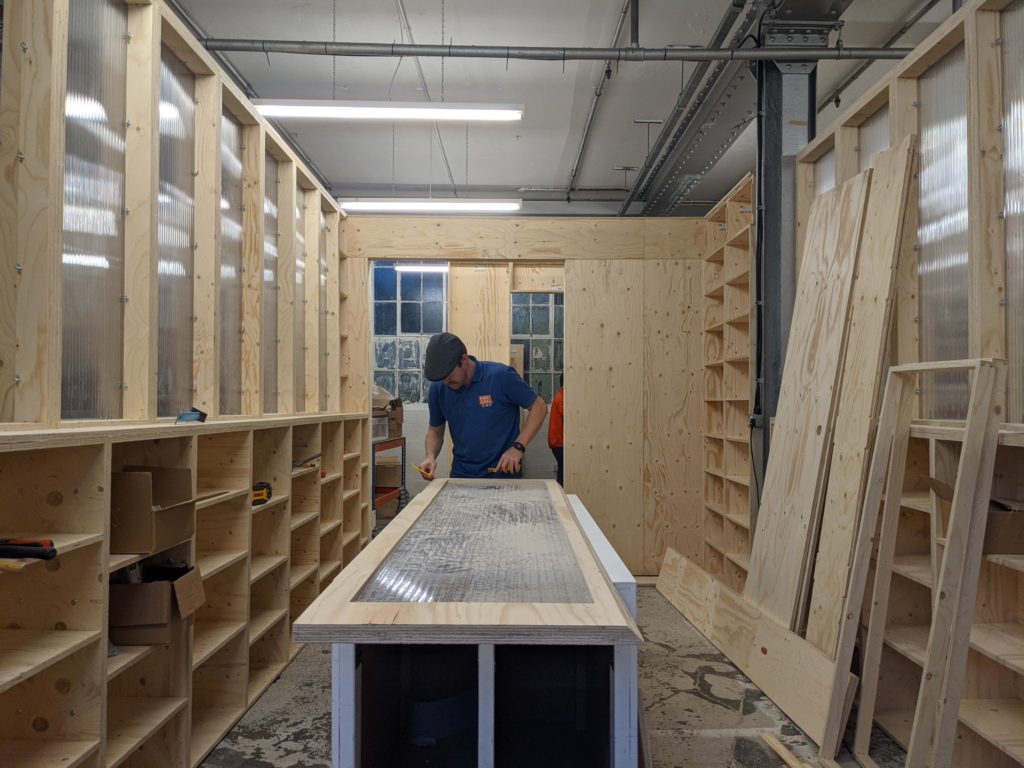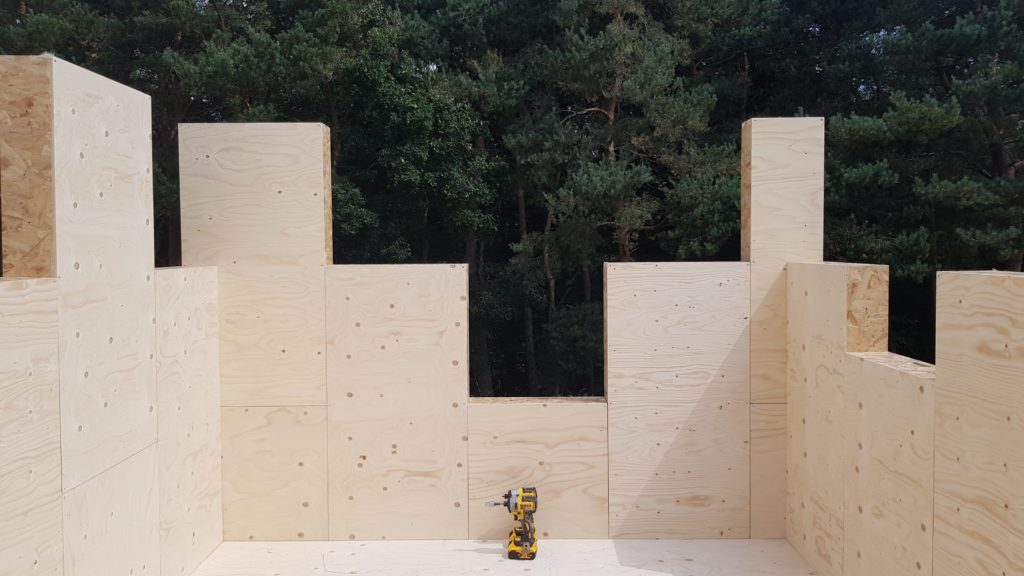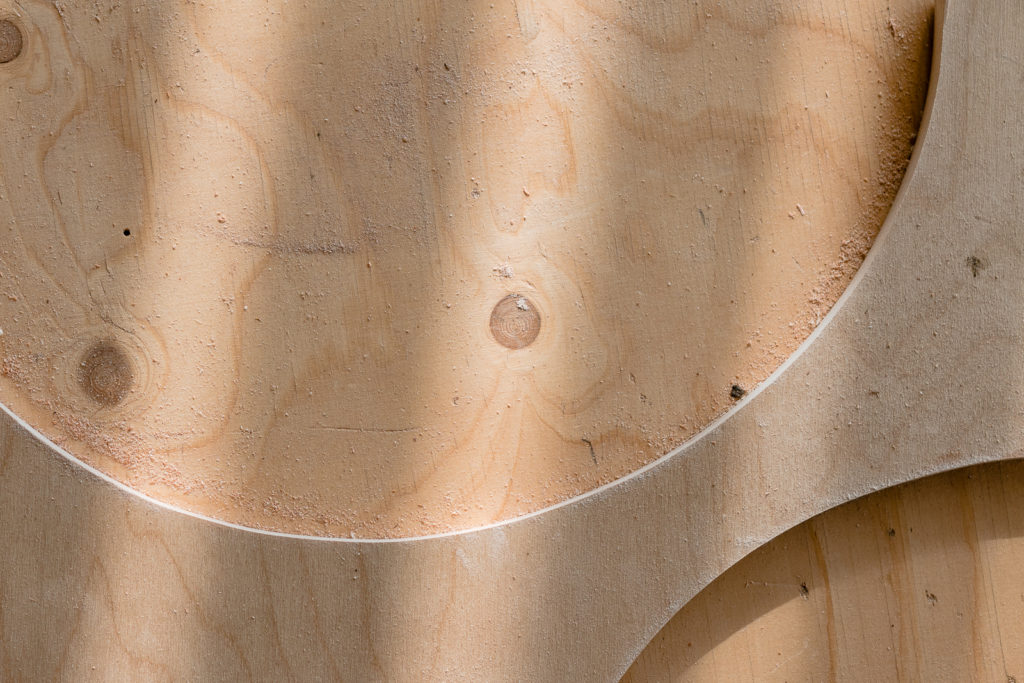Know your material… Plywood
Plywood is our material of choice for many reasons. Here we talk a little about it so hopefully you can appreciate it even more.
Introduction
Plywood is a material manufactured from thin layers or “plies” of wood veneer that are glued together with adjacent layers having their wood grain rotated up to 90 degrees to one another. It is an engineered wood from the family of manufactured boards.
All plywoods bind resin and wood fibre sheets (cellulose cells that are long, strong and thin) to form a composite material. This alternation of the grain is called cross-graining and has several important benefits: it reduces the tendency of wood to split when nailed at the edges; it reduces expansion and shrinkage, providing improved dimensional stability; and it makes the strength of the panel consistent across all directions. There is usually an odd number of plies, so that the sheet is balanced, this reduces warping. It also means that the grain on each face is running in the same direction. Because plywood is bonded with grains running against one another and with an odd number of composite parts, it has high stiffness perpendicular to the grain direction of the surface ply.
The word ply derives from the French verb plier, “to fold”, from the Latin verb plico, from the ancient Greek verb πλέκω.
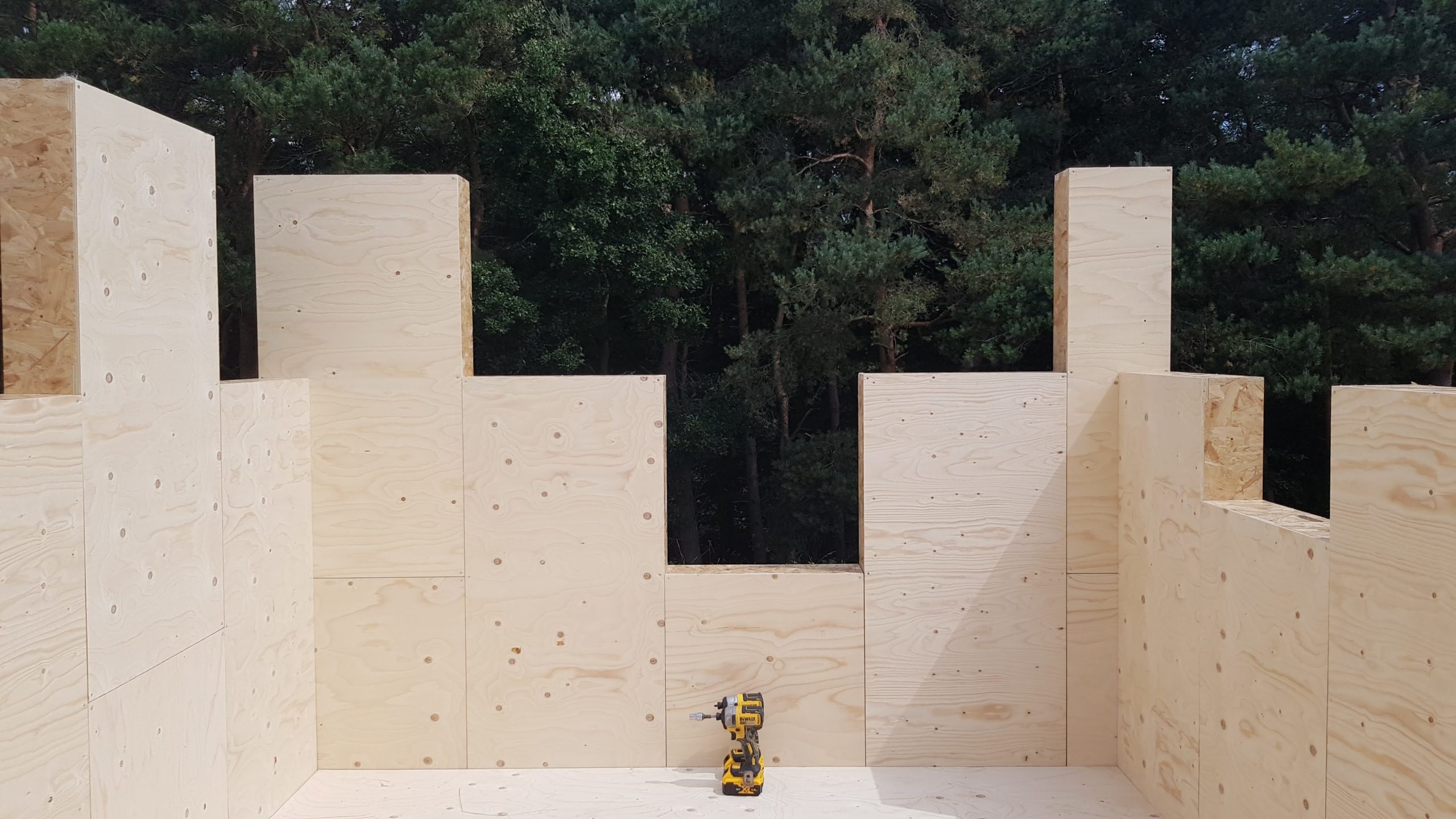
The start of a wooden wall
History
The ancient Egyptians and Greeks cut wood thinly and glued it together in layers with the grain in perpendicular directions, making a versatile building material. In 1797 Samuel Bentham applied for patents covering several machines to produce veneers. In his patent applications, he described the concept of laminating several layers of veneer with glue to form a thicker piece – the first description of what we now call plywood. Bentham was a British naval engineer with many shipbuilding inventions to his credit. Veneers at the time of Bentham were flat sawn, rift sawn or quarter sawn; i.e. cut along or across the log manually in different angles to the grain and thus limited in width and length.
About fifty years later Immanuel Nobel, realised that several thinner layers of wood bonded together would be stronger than a single thick layer of wood. Understanding the industrial potential of laminated wood, he invented the rotary lathe.
There is little record of the early implementation of the rotary lathe and the subsequent commercialisation of plywood as we know it today, but in its 1870 edition, the French dictionary Robert describes the process of rotary lathe veneer manufacturing in its entry Déroulage. We can presume that rotary lathe plywood manufacturing was an established process in France in the 1860s. Plywood was introduced into the United States in 1865 and industrial production there started shortly after. In 1928, the first standard-sized 4 ft by 8 ft (1.2 m by 2.4 m) plywood sheets were introduced in the United States for use as a general building material.
Artists use plywood as a support for easel paintings to replace traditional canvas or cardboard. Ready-made artist boards for oil painting in three-layered plywood (3-ply) were produced and sold in New York as early as 1880.
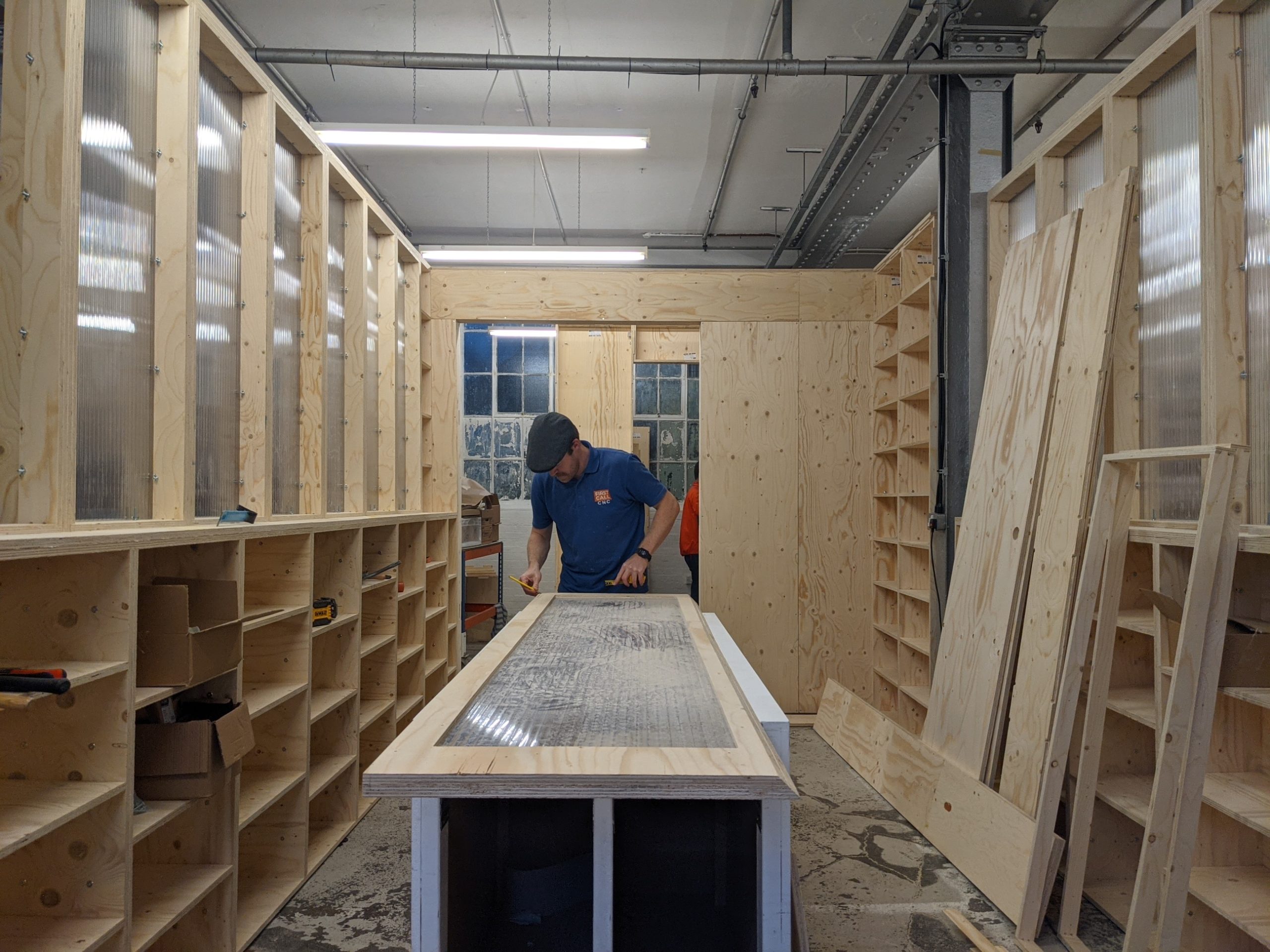
Taking shape
The Wood…
Softwood plywood
Softwood plywood is usually made either of cedar, Douglas fir or spruce, pine, and fir (collectively known as spruce-pine-fir or SPF) or redwood and is typically used for construction and industrial purposes.
The most common dimension is 1.2 by 2.4 metres or the slightly larger imperial dimension of 4 feet × 8 feet is commonly used as a term for a sheet. Plies vary in thickness from 1.4 mm to 4.3 mm. The number of plies, which is always odd, depends on the thickness and grade of the sheet. Roofing can use the thinner 12 millimetre plywood. Subfloors are at least 18 millimetres thick, the thickness can depend on the distance between floor joists. Sometimes, plywood for flooring applications is often tongue and groove (T&G); This prevents one board from moving up or down relative to its neighbour, providing a solid-feeling floor when the joints do not lie over joists. T&G plywood is usually found in the 12-25 millimetre range.
Birch Plywood
Because of the hardness of birch, it is easier to shape with power tools and quite difficult to work with hand tools.
Birch wood is fine-grained and pale in colour, often with an attractive satin-like sheen. Ripple figuring may occur, increasing the value of the timber for veneer and furniture-making.
Birch plywood is made from laminations of birch veneer. It is light but strong, and has many other good properties. It is among the strongest and dimensionally most stable plywoods, although it is unsuitable for exterior use. Birch plywood is used to make longboards and skateboards, giving them a strong yet flexible ride. It is also used (often in very thin grades with many laminations) for making model aircraft.
Other plywoods
Other types of plywood include fire-retardant, moisture-resistant, wire mesh, sign-grade, and pressure-treated. However, the plywood may be treated with various chemicals to improve the plywood’s fireproofing. Each of these products is designed to fill a need in industry.
Baltic Birch plywood is a product of an area around the Baltic Sea. Originally manufactured for European cabinet makers but now popular in the United States as well. It is very stable composed of an inner void-free core of cross-banded birch plies with an exterior grade adhesive. The face veneers are thicker than traditional cabinet grade plywood.
Structural characteristics
A typical plywood panel has face veneers of a higher grade than the core veneers. The principal function of the core layers is to increase the separation between the outer layers where the bending stresses are highest, thus increasing the panel’s resistance to bending. As a result, thicker panels can span greater distances under the same loads. In bending, the maximum stress occurs in the outermost layers, one in tension, the other in compression. Bending stress decreases from the maximum at the face layers to nearly zero at the central layer. Shear stress, by contrast, is higher in the centre of the panel, and at the outer fibres. Within Europe basic plywood can be divided into three main categories: birch plywood (density approx. 680 kg/m3), mixed plywood (density approx. 620 kg/m3) and conifer plywoods (density 460-520 kg/m3)
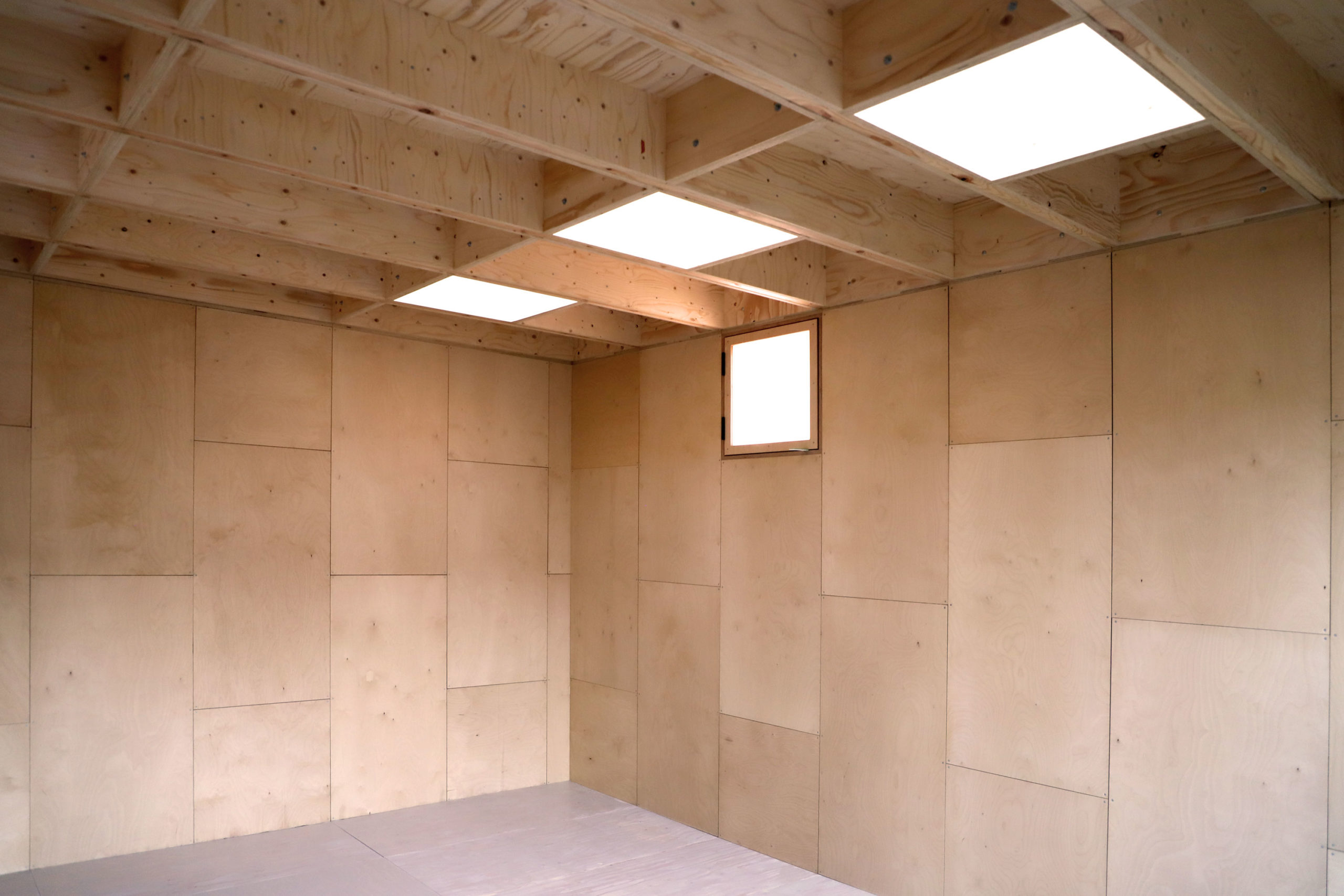
A Spruce Ceiling with Birch Walls
Production
Plywood production requires a good log, called a peeler, which is generally straighter and larger in diameter than one required for processing into dimensioned lumber by a sawmill. The log is laid horizontally and rotated about its long axis while a long blade is pressed into it, causing a thin layer of wood to peel off (much as a continuous sheet of paper from a roll). An adjustable nosebar, which may be solid or a roller, is pressed against the log during rotation, to create a “gap” for veneer to pass through between the knife and the nosebar. The nosebar partly compresses the wood as it is peeled; it controls vibration of the peeling knife; and assists in keeping the veneer being peeled to an accurate thickness. In this way the log is peeled into sheets of veneer, which are then cut to the desired oversize dimensions, to allow it to shrink (depending on wood species) when dried. The sheets are then patched, graded, glued together and then baked in a press at a temperature of at least 140 °C (284 °F), and at a pressure of up to 200 psi to form the plywood panel. The panel can then be patched, have minor surface defects such as splits or small knot holes filled, re-sized, sanded or otherwise refinished, depending on the market for which it is intended.
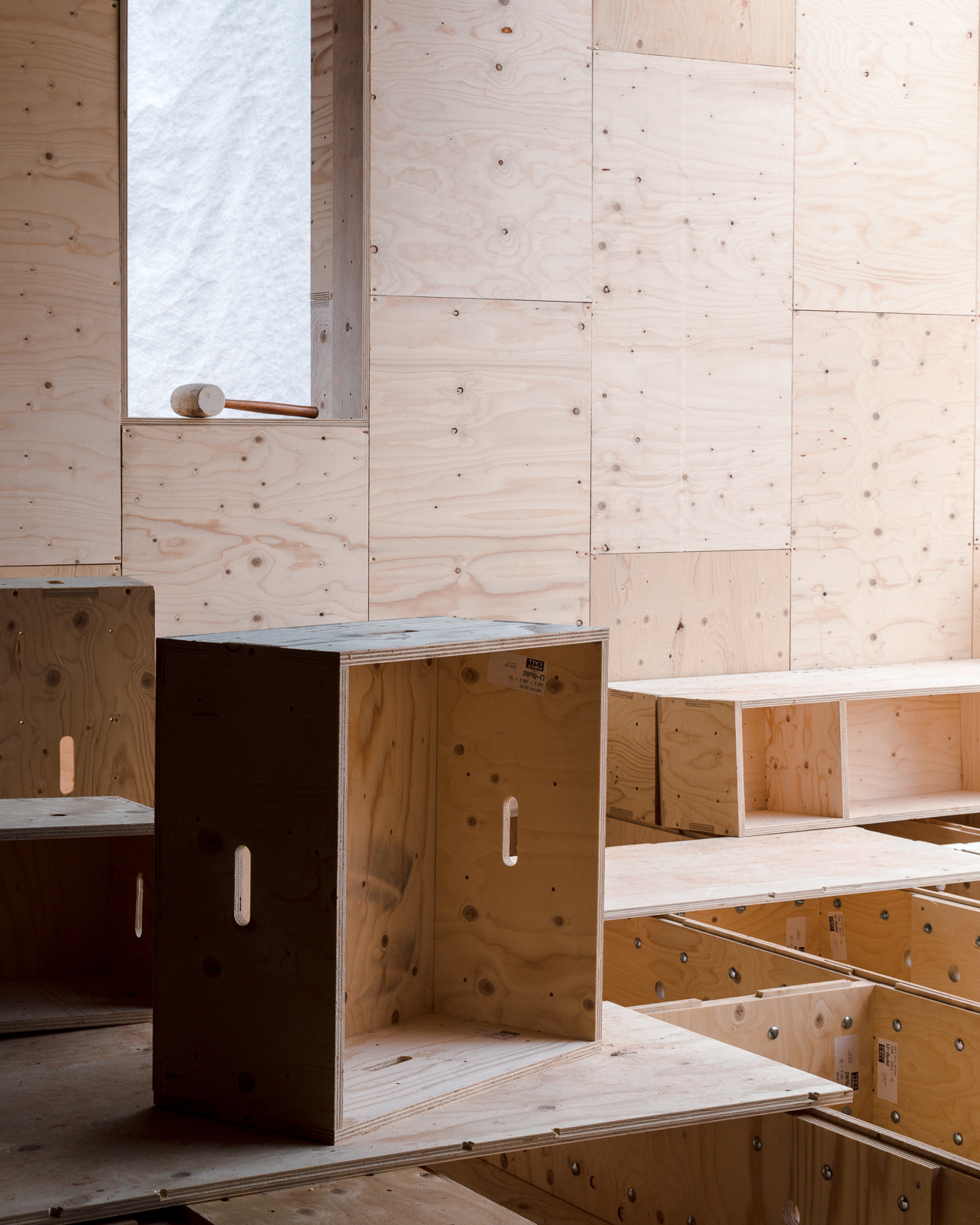
Interior coming to life
Use and the Environment
Interior grade plywood generally uses the less expensive urea-formaldehyde glue, which has limited water resistance, while outdoor and marine-grade plywood are designed to withstand moisture, and use a water-resistant phenol-formaldehyde glue to prevent de-lamination and to retain strength in high humidity.
The adhesives used in plywood have become a point of concern. Both urea formaldehyde and phenol formaldehyde are carcinogenic in very high concentrations. As a result, many manufacturers are turning to low formaldehyde-emitting glue systems, denoted by an “E” rating. Plywood produced to “E0” has effectively zero formaldehyde emissions.
In addition to the glues being brought to the forefront, the wood resources themselves are becoming the focus of manufacturers, due in part to energy conservation, as well as concern for natural resources. There are several certifications available to manufacturers who participate in these programs. Programme for the Endorsement of Forest Certification (PEFC) Forest Stewardship Council (FSC), Leadership in Energy and Environmental Design (LEED), Sustainable Forestry Initiative (SFI), and Greenguard are all certification programs that ensure that production and construction practices are sustainable. Many of these programs offer tax benefits to both the manufacturer and the end user.
Taking into careful consideration the effects of any human made material, construction method and process on the planet, it’s clear that we shouldn’t leave a mess, possibly no trace at all. Using plywood means we can be versatile and creative with the modularity of the material. With our system the material can be used time and again, as long as it is looked after, kept safe and dry then it will certainly outlive a generation. Once you have finished with it, you may be able to pass it on to someone else to use for something else. Its upcycle potential is endless, along with its strength and durability many more generations can appreciate the material and our system that celebrates it.
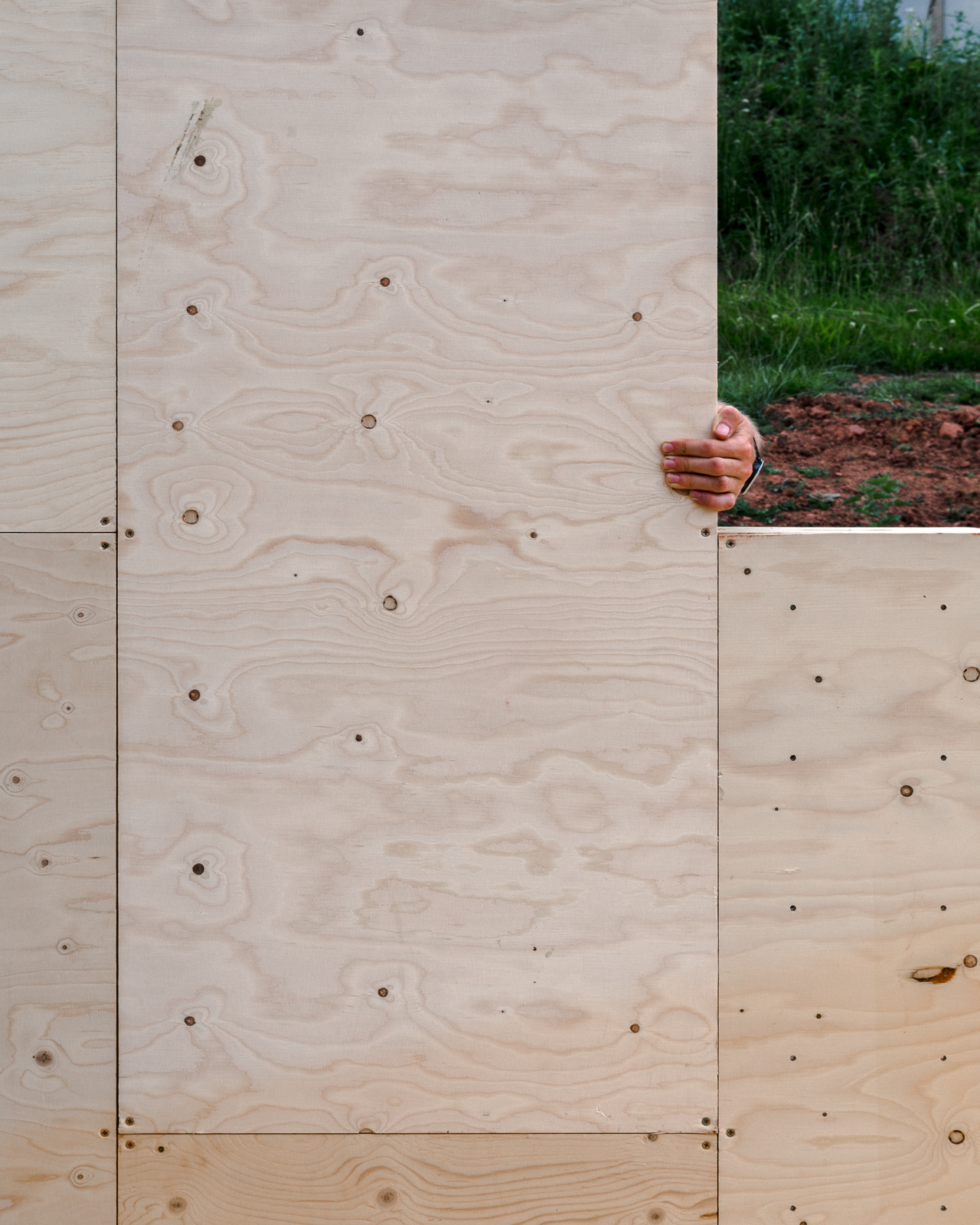
Goodbye from lovely ply…
If you have any further questions, please get in touch via email info@u-build.org, or check our FAQ.
